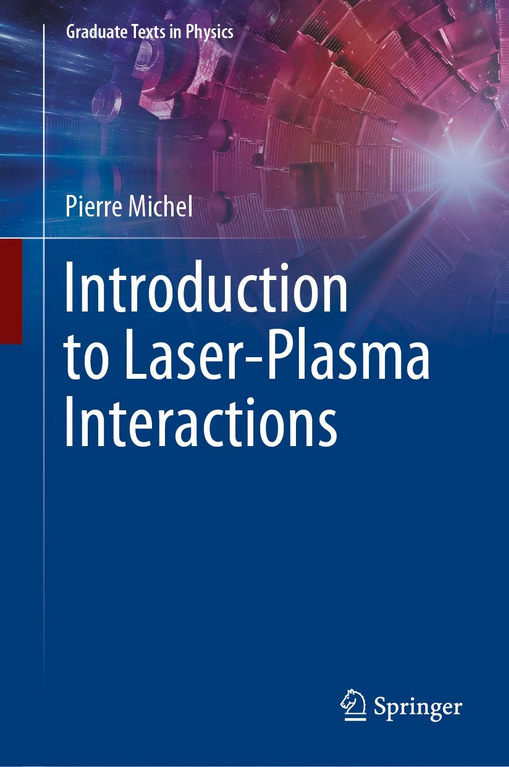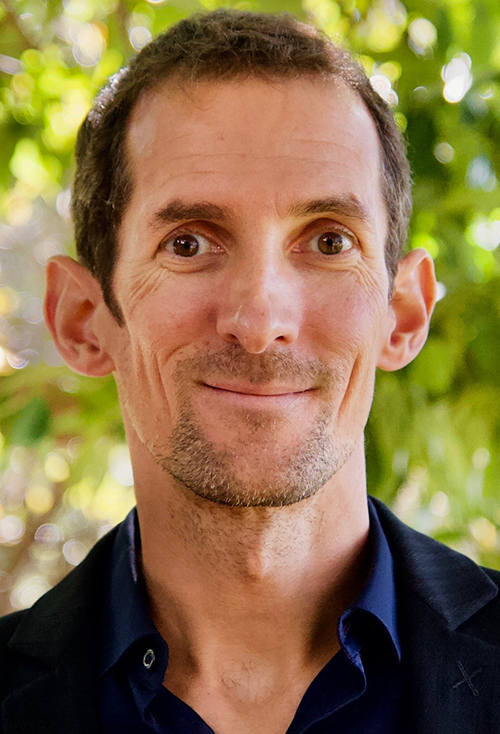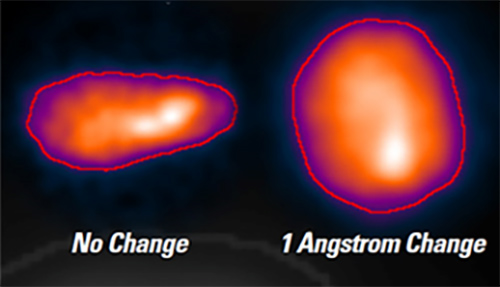
For many years, LLNL physicist Pierre Michel, an internationally known expert on the physics of laser-plasma interactions (LPI), saw a gap in his field;s literature: the lack of an up-to-date textbook on LPI relevant to the kind of experiments conducted on NIF.
Michel was concerned because LPI, which occurs when laser beams create and then interact with plasma in a NIF target, is a critical factor in NIF's ability to consistently achieve high energy yields in inertial confinement fusion (ICF) and high energy density (HED) experiments. A current text would be an important asset for teaching the subject to students and researchers interested in entering the field.
“It had been a long time since a book was published,” Michel said. “The last one really relevant to what we are doing at NIF was (former LLNL physicist) Bill Kruer's book that was published in 1988. After seeing that no one else was going to do it, I decided to take it upon myself to try and write the kind of textbook I wish I'd had when I started in the field.”
The result of Michel's initiative, Introduction to Laser-Plasma Interactions, was published in April by the science publisher Springer Nature as part of a series of graduate texts in physics.
According to the publisher, the book “includes exercises making it ideal for a teaching resource, focuses on the physics behind the world's most cutting-edge large-scale LPI facilities, and describes a central physics area for laser fusion research.”
“One of the goals of this book is to provide an accessible introduction to some of the most important aspects of LPI physics in view of the current state of ICF research,” Michel notes in the book's introduction. “Excellent and recent textbooks already exist on short-pulse, high-intensity laser-plasma physics; this book focuses on the interaction of long-pulse (nanosecond-scale), high-energy lasers with plasmas in the general context of ICF or HED science.”
The book also provides a comprehensive description of the optical smoothing technologies (phase plates, smoothing by spectral dispersion and polarization smoothing) used to condition laser beams in high-power laser facilities like NIF and the OMEGA laser at the University of Rochester.
A Collaborative Effort

Pierre Michel
Michel worked on the book nights and weekends for almost three years, but it took eight months of full-time work to complete it.
LLNL's High Energy Density Science Center “provided support for eight months of my time to work on the book,” Michel said. “That's really what made the whole project possible. I wrote everything myself, but I also got a lot of help from many of my colleagues at the Lab who answered physics questions I had.
“I sent every chapter of the book to one or two colleagues at LLNL or external institutions, including the University of Rochester, Los Alamos National Laboratory, the Naval Research Laboratory, UC San Diego, CEA (the French Alternative Energies and Atomic Energy Commission), and the University of Alberta, who agreed to check for errors.”
Félicie Albert, deputy director of the HEDS Center, said the book “was an enormous undertaking. This book is poised to become a reference in the field, even more so now that NIF has achieved ignition.”
“Pierre Michel has written a highly original and useful book,” said LPI researcher Wojciech Rozmus of the University of Alberta in a review. “As an accomplished laser-plasma researcher, Michel combines his innovative ideas in plasma optics with detailed technical results on laser-plasma interactions. The book will be indispensable for graduate students and researchers working in the areas of inertial confinement fusion and modern applications of laser-plasma interaction processes.”
LPI: For Better and Worse
Laser-plasma interactions occur when laser beams entering a NIF hohlraum create plasma, a mixture of ions and free electrons, which then interacts with the beams (see “How NIF Targets Work”).
The physics of LPI describes how the laser beams propagate through the plasma and how they deposit their energy inside the target. It also includes instabilities resulting from the coupling between the laser and plasma waves. If uncontrolled, these instabilities can have deleterious effects, such as creating asymmetries, sapping energy from the implosion, and causing light to “backscatter” into the beamlines and potentially damage the system's optics.
But LPI can also be beneficial; a prime example is researchers' ability to fine-tune the energy balance of NIF implosions using a technique called cross-beam energy transfer, or CBET.

The effect of cross-beam energy transfer on implosion symmetry was illustrated in a March, 2019, NIF experiment. The wavelength of the laser light on a subset of beams was changed by one angstrom (one ten-billionth of a meter, or about the diameter of an atom) and produced the result shown on the right.
Michel led an effort to study and model CBET in preparation for some of the first NIF experiments. He predicted that plasma gratings created when the beams cross at the hohlraum's laser entrance holes, along with small changes in the wavelengths of a subset of the beams, could be used to redirect the laser energy inside the hohlraum and improve the symmetry of the implosions.
LLNL physicist Bob Kirkwood “did the first experiments in the 1990s showing that the (CBET) effect is real,” Michel said. “Later on, my colleagues and I built the scientific case to show that we could use CBET for symmetry tuning in ICF implosions. We showed that the process should be robust and made the case that it should be an available technique to be used on NIF.”
And CBET has, in fact, been used on almost every NIF shot since; it played a key role in the groundbreaking NIF experiment on Dec. 5, 2022, that achieved ignition—producing more energy than the energy used to create the fusion reaction (see “Precise Changes Yield Historic Results”).
For his work on LPI and CBET, Michel was awarded the 2015 Edouard Fabre Prize from the European Physical Society, and he and his colleagues received the 2012 John Dawson Award for Excellence in Plasma Physics Research from the American Physical Society (APS).
Michel received his Ph.D. in physics from the École Polytechnique in Paris in 2003, where he worked on experiment and modeling of long-pulse laser-plasma interactions. From 2004 to 2006, he was a postdoctoral fellow at Lawrence Berkeley National Laboratory, working in the BELLA Center on laser wakefield acceleration and laser-plasma-based ultra-short x-ray sources.
He has been at LLNL since 2006, where he is a group leader for LPI physics in the NIF & Photon Science Directorate and has been the principal investigator on several projects on plasma and gas optics. He is a visiting scientist at the University of California, Berkeley, and has taught online lectures on LPI through the HEDS Center. A fellow of the APS, he has published more than 100 papers on short- and long-pulse LPI.
News from: https://lasers.llnl.gov/news/bringing-the-literature-of-laser-plasma-interactions-up-to-date


